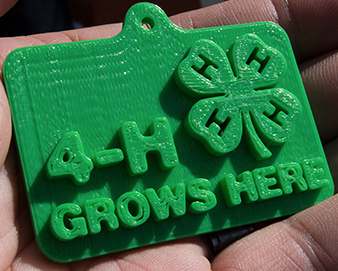Educators and community leaders play a critical role in helping young people learn about and connect with the world around them. The USDA encourages educators, youth-serving organizations and community leaders to incorporate agricultural concepts across core curriculum to develop educational opportunities for students.
Listed below are USDA resources, curricula and teacher training opportunities to encourage participation in agricultural education.
Agriculture in the Classroom (AITC)
USDA NIFA's Agriculture in the Classroom Program (AITC) helps improve agricultural literacy, awareness, knowledge, and appreciation among pre-K through 12th-grade teachers and their students. AITC serves nearly 5 million students and 60,000 teachers annually through workshops, conferences, field trips, farm tours, and other activities. Visit the AITC’s curriculum website for K-12 standards-based lesson plans and companion resources in science, social studies, health and nutrition, and career and technical education.
Forest Service – Conservation Education
Conservation education helps people of all ages understand and appreciate our country's natural resources -- and learn how to conserve those resources for future generations. Through structured educational experiences and activities for varying age groups and populations, conservation education helps people realize how natural resources and ecosystems affect each other and how resources can be used wisely. Learn more about formal and non-formal educational opportunities provided by the Forest Service.
USDA/1890 National Scholars Program
The USDA/1890 National Scholars Program is a partnership between USDA and the 1890 historically black land-grant colleges and universities (PDF, 1.2 MB). The program provides full tuition, fees, books, room and board to students pursuing degrees in agriculture, food, natural resource sciences, or related academic disciplines. When the student has completed the academic and summer work requirements of the scholarship, USDA may at its discretion convert the student to a permanent employee without further competition.
4-H
4-H is USDA’s flagship positive youth development and education program. The unique partnership with the Cooperative Extension System through land-grant universities and the National 4-H Council empowers young people to lead for a lifetime. 4-H uses experiential learning—learning by doing—as a primary teaching approach to learn life skills such as leadership, citizenship, community service, STEM education, and public speaking. Membership is open to all youth beginning at age 8 or 4th grade. L and-grant university extension 4-H offices deliver local programs. Additionally, military 4-H clubs offer quality educational experiences that allow youth to continue their 4-H work wherever they move when their parents are deployed.
Join or start a 4‑H club by contacting your local 4-H office.
- Do you want to start a club or chapter?
Team Nutrition
Team Nutrition, an initiative of the USDA’s Food and Nutrition Service, supports national efforts to promote lifelong healthy food choices and physical activity by improving the nutrition practices of the Child Nutrition Programs. It provides resources to schools, child care settings, and summer meal sites that participate in these programs.
- Diploma in hand?
USDA Future Scientist Program
The USDA Future Scientist Program engages communities and schools (grades K-12) with hands-on, inquiry-based activities with USDA researchers at the Agricultural Research Service (ARS). ARS scientists at ARS labs around the country open their doors to teachers, students, and parents with presentations on current research, hands-on demonstrations, career days, and inspiration for future careers in STEM (science, technology, engineering, and mathematics). This program is a partnership among between USDA’s Hispanic-Service Institutions National Program, Agricultural Research Service, and Texas A&M University.
- Five Reasons to Use Ag in the Classroom



